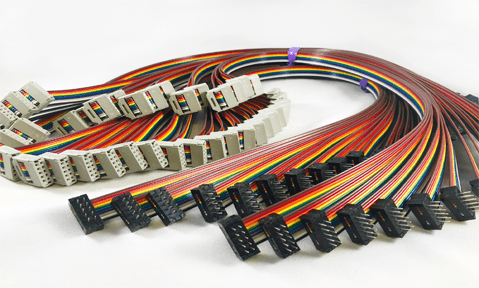Introduction
Gamers, developers, and professionals frequently want for more performance to match the demands of modern workloads as video games, graphic apps, and high-performance computing jobs have grown more demanding. Using several graphics cards (GPUs) is one of the most effective techniques to increase a system’s graphics performance. With the help of technologies like AMD’s CrossFire and NVIDIA’s SLI (Scalable Link Interface), users may now combine the power of numerous GPUs to achieve faster processing speeds, higher frame rates, and better graphics performance. This synergy is made possible in large part by the SLI/CrossFire bridge.
The technical features of SLI and CrossFire bridges, as well as their uses, advantages, drawbacks, installation procedure, and historical development, will be examined in this article. While CrossFire and SLI have both had significant roles
1. What are SLI and CrossFire?

a. Definitions of SLI and CrossFire
SLI (Scalable Link Interface) is NVIDIA’s multi-GPU technology that allows two or more compatible NVIDIA graphics cards to work in tandem and combine their processing power to provide better performance in games and graphics-intensive applications. Introduced in 2004, SLI became a popular choice among gamers seeking ultra-high resolutions and extreme frame rates.
CrossFire, on the other hand, is AMD’s equivalent technology. introduced in 2005, CrossFire allows two or more AMD Radeon GPUs to work together to improve graphics performance in a similar fashion. both SLI and CrossFire combine the power of multiple GPUs to Both SLI and CrossFire share the same core goal of combining the power of multiple GPUs to improve gaming and rendering performance.
b. Role of SLI and CrossFire Bridges
SLI/CrossFire bridges are hardware components that connect multiple GPUs and enable efficient communication between them. The bridge synchronizes the GPUs and splits the workload, allowing two or more cards to work together seamlessly to render a frame. The bridge physically connects the GPUs via a unique connector on the top edge of the graphics card.
Without the bridge, the GPUs can still function independently, but their ability to communicate and synchronize workloads is reduced, leading to performance bottlenecks. newer versions of SLI and CrossFire have improved communication, but the bridge is still a key component of many multi-GPU 1. the bridge is still essential in many multi-GPU setups, especially on older cards; 2.
2. how SLI and CrossFire work.
a. GPU Parallel Processing
The core principle behind SLI and CrossFire is parallel processing. By combining the power of multiple GPUs, these technologies divide the graphics rendering workload, resulting in faster and more efficient image processing. This improves performance in graphics-intensive games and applications, especially at high resolutions and with multiple monitors.
While the GPUs work together, the system CPU and memory also play a role in managing the workload, ensuring that data is delivered to the GPUs at the appropriate rate. supplied to the GPU at the appropriate rate.
b. Rendering Mode
SLI and CrossFire have several rendering modes that determine how the GPUs divide the workload. The most common modes are
Alternate Frame Rendering (AFR): AFR: In AFR mode, each GPU renders individual frames in turn. For example, in a 2-GPU setup, the first GPU renders all odd frames and the second GPU renders even frames. This effectively doubles the frame output, leading to smoother gameplay.
Split Frame Rendering (SFR): In SFR mode, each frame is split into segments and the GPUs work together to render different parts of the frame. Division of labor is based on the complexity of the image, so (in mixed GPU setups) the more heavily loaded areas are assigned to the more powerful GPU.
SuperTiling: In CrossFire, a less common rendering method called SuperTiling splits the frame into smaller tiles (like a checkerboard pattern), with each GPU responsible for rendering a different tile. This method helps balance the workload between GPUs.
Hybrid rendering: Some games and applications use a combination of different rendering methods to optimize performance. For example, one GPU may focus on graphics rendering while the other handles post-processing effects such as anti-aliasing or motion blur.
c. Importance of bridging
SLI/CrossFire bridges act as a direct communication channel between GPUs to ensure that data is shared quickly and efficiently. This reduces latency (the delay between when an image is processed and when it is displayed) and allows the GPUs to synchronize their work more efficiently. In previous generations of SLI and CrossFire, the bridge was essential to relieve the bandwidth burden on the PCIe bus, the interface that connects the GPU to the motherboard. By offloading some of the data transfer to the bridge, the GPUs could communicate more efficiently and avoid bottlenecks.
3. types of riser cards
There are several types of riser cards, each designed for a specific use case or system configuration. The following are the most common riser card types
a. PCIe riser card
PCI Express (PCIe) riser cards are by far the most common type, as PCIe is the standard interface for modern expansion cards. These riser cards are used to relocate PCIe-based components such as graphics cards, network cards, SSD expansion cards, etc. PCIe riser cards come in a variety of lanes, including x1, x4, x8, and x16, depending on the requirements of the expansion card to be connected configurations, depending on the requirements of the expansion cards to be connected.
Pros: High-speed connectivity, support for a wide range of devices, most common type of riser card.
Cons: High quality models with longer cables can be expensive.
b. PCI riser cards
Older systems may rely on the PCI interface for expansion cards; PCI riser cards are used to expand and relocate these legacy expansion cards in systems where PCI slots are still in use. Although PCI is largely obsolete in modern systems, these riser cards are useful for maintaining backward compatibility with older workstations and industrial systems.
Pros: Provides backward compatibility with older systems and is reasonably priced.
Cons: Slow data transfer speeds compared to PCIe.
c. ISA Riser Card
For older legacy systems, ISA riser cards are available to expand and relocate ISA-based expansion cards. ISA (Industry Standard Architecture) is an older bus standard that was widely used in computers during the 1980s and 1990s. An older bus standard that was widely used; ISA riser cards are now very rare and only used in specialized industrial applications where legacy hardware is still in operation.
Pros: Maintains compatibility with very old systems.
Cons: Extremely outdated, difficult to obtain, and irrelevant to most modern users.
d. Flexible riser card (ribbon cable)
Flexible riser cards, also known as ribbon riser cables, offer the most flexibility with respect to expansion card placement. These riser cards use flexible cables to connect the motherboard to the expansion cards, allowing for customized placement of components within the case. Ribbon risers are especially popular in SFF builds, custom PCs, and industrial systems that require precise positioning to fit components into tight spaces.
Pros Flexible positioning options. Ideal for custom PCs and small PCs.
Cons: Ribbon cables are prone to interference and may slightly degrade performance compared to rigid risers.
e. Server-specific riser cards
There are riser cards designed specifically for servers. These server riser cards are designed to fit into narrow rack-mounted server enclosures and are optimized for vertical or horizontal expansion card placement. Server riser cards are essential in high-density data center environments where maximizing space to fit multiple servers in a single rack is critical.
Pros: Optimized for server environments and efficient use of space.
Cons: Generally expensive, designed for specialized use cases.
4. riser card applications and uses
Riser cards have a wide range of applications in a variety of environments, from small PCs to high-performance servers. The following are the most common use cases for riser cards
a. Small form factor (SFF) builds
Space is a critical commodity in small form factor (SFF) builds. Enthusiasts and professionals building compact systems often face challenges when trying to fit powerful components such as GPUs and additional storage into small cases. Riser cards allow components to be repositioned and fit into smaller spaces without compromising performance.
Example In an SFF gaming PC, a riser card can be used to mount a high-end GPU in parallel with the motherboard and fit it into a slim, portable case while maintaining the same level of performance as a full-size desktop.
b. Server and Data Center Configuration
Servers, especially in data centers, require efficient use of space to maximize the number of systems that can be installed in a single rack. Server riser cards allow expansion cards to be installed vertically or horizontally, making it possible to use high-performance components such as network controllers and RAID cards in tight spaces.
Example In a 1U or 2U rackmount server, riser cards can be used to install network interface cards (NICs) and storage controllers horizontally to optimize space utilization in the data center.
c. Mining Rigs and GPU Farms
Cryptocurrency mining rigs rely on multiple GPUs running in parallel to maximize hash rates. Riser cards are critical to expand the number of GPUs a single motherboard can support. Riser cards allow GPUs to be placed in different locations and orientations to ensure proper cooling and airflow while maximizing GPU density.
Example In a cryptocurrency mining rig, PCIe riser cards can be used to place multiple GPUs in multiple racks, allowing the system to perform intensive mining operations without overheating.
d. Custom PCs and Modifications
PC enthusiasts and modders often use riser cards to achieve unique configurations not possible with standard case layouts. For example, some modders use riser cards to mount graphics cards vertically and show them through tempered glass side panels, adding aesthetic appeal to the build.
Example A custom PC that uses flexible PCIe riser cables to vertically mount the GPU for better visibility and airflow within a custom designed case.
e. Industrial and Embedded Systems
Industrial and embedded computing systems use riser cards to expand system functionality while maintaining a compact form factor. These systems are deployed in environments where space, power, and cooling are tightly controlled, often requiring custom configurations.
Embedded systems designed for industrial automation, for example, can use riser cards to mount additional communication cards and sensors in a compact case, allowing them to interface with a variety of industrial devices while maintaining a small footprint.
5. advantages of using riser cards
Riser cards offer several important advantages to PC builders, system administrators, and enthusiasts
a. Space Efficiency
The most obvious advantage of using a riser card is the ability to optimize space. Whether in a compact PC case or a server rack, riser cards allow expansion cards to be installed without requiring much space, making it possible to use powerful hardware in space-constrained environments.
b. Flexibility.






